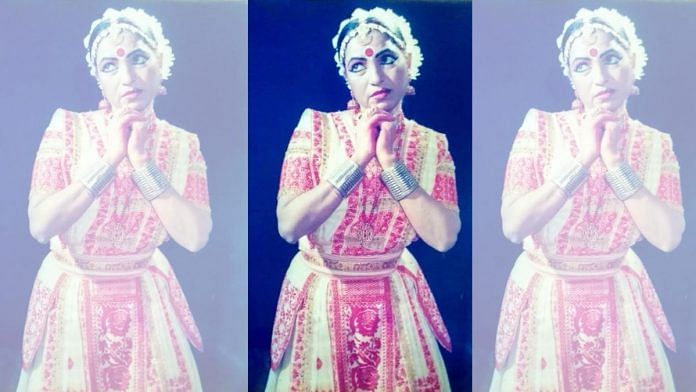Guwahati: Noted Sattriya and Odissi dancer Gorima Hazarika passed away Friday at her residence in the Assam capital.
She was 83, and was said to be suffering from age-related ailments.
Born in 1939, Hazarika was the youngest of five children. She started learning dance from a very early age, under Sattriya stalwarts such as Raseswar Saikia Borbayan and Ghanakanta Bora. Sattriya is a dance form that has its roots in the Vaishnavite movement which was propagated by scholar Sankaradeva in the 15th century in Assam.
Hazarika, a Sangeet Natak Akademi awardee, was also proficient in Kathak, which she learnt from Delhi’s Kathak Kendra. While in Delhi, she also learnt Odissi, which she would subsequently go on to teach her students in Assam.
“She was a great artiste. She learnt Sattriya under me in the 1980s, performed both at home and abroad along with me at various stages,” Padma Shri awardee and Sattriya exponent Ghanakanta Bora told ThePrint. “I am deeply saddened by her demise.”
Rinjumoni Saikia, daughter of Sattriya stalwart Borbayan, said: “She was the first person who established Odissi in Assam…She is known all over Assam. She used to be the dance director for plays as well.”
Also Read: Maya Rao — the woman whose ‘unkept promise’ brought Kathak to south India
Contributions to Sattriya
Hazarika entered the dance world when Sattriya dancers were mostly males (known as ‘bhokots’).
“It was very tough back then for ladies to get into this (form of) classical dancing. It started from a batch of dancers who learnt from my father which included Gorima Hazarika,” said Saikia. “Her first contribution was the costumes Sattriya dancers wear. She was the one who designed a costume out of silk — ‘mekhela sador’. The ornaments we would wear were different.”
Bora said Hazarika leaves behind a legacy through her school for classical and traditional dance forms, that she established in 1982.
“She has her own centre — Mitali Kala Kendra. This is where a lot of students learnt about Sattriya. These students have gone on to perform at various stages, nationally and internationally, and some of them have gone on to teach others,” he added.
(Edited by Tony Rai)
Also Read: Kelucharan Mohapatra, a perfectionist and guru par excellence who redefined Odissi dance






